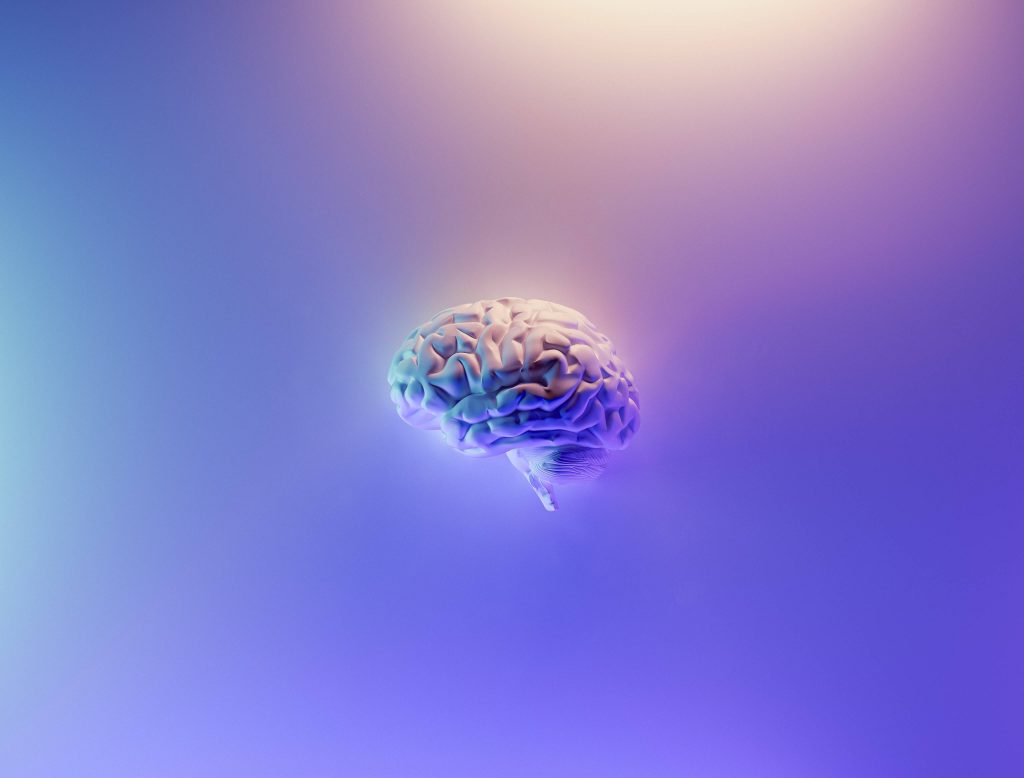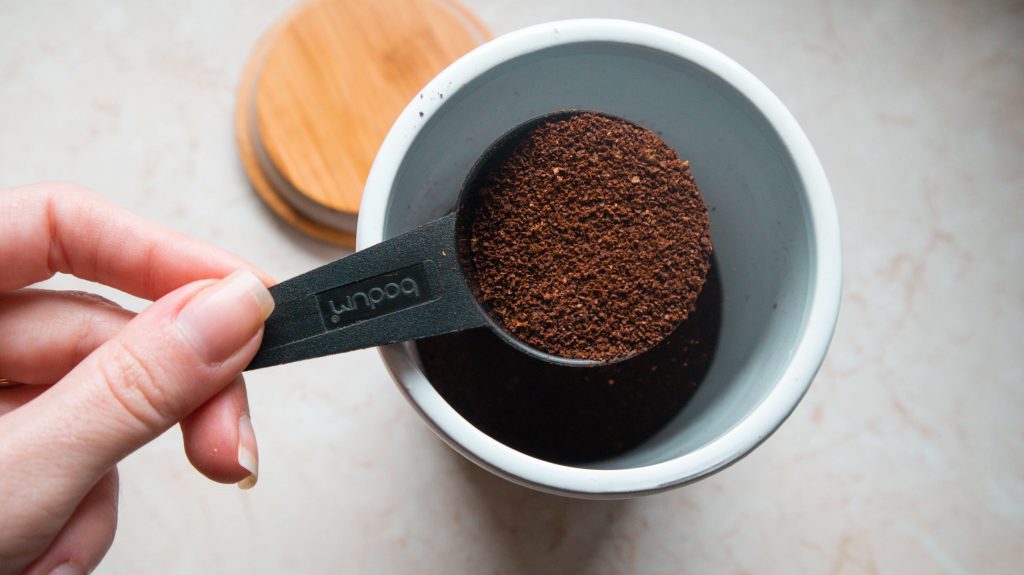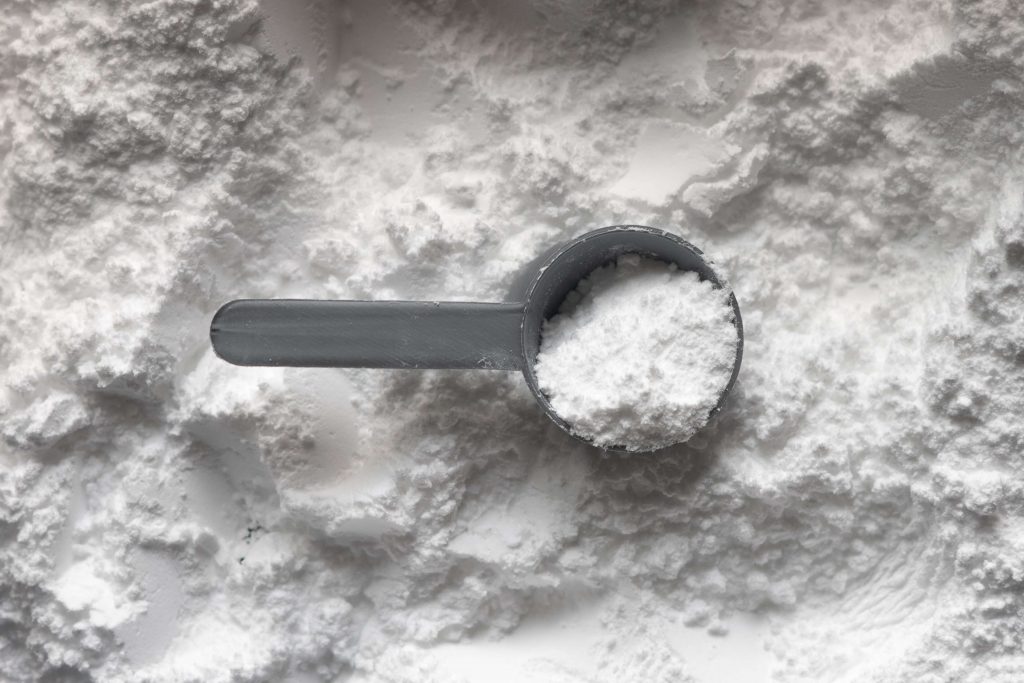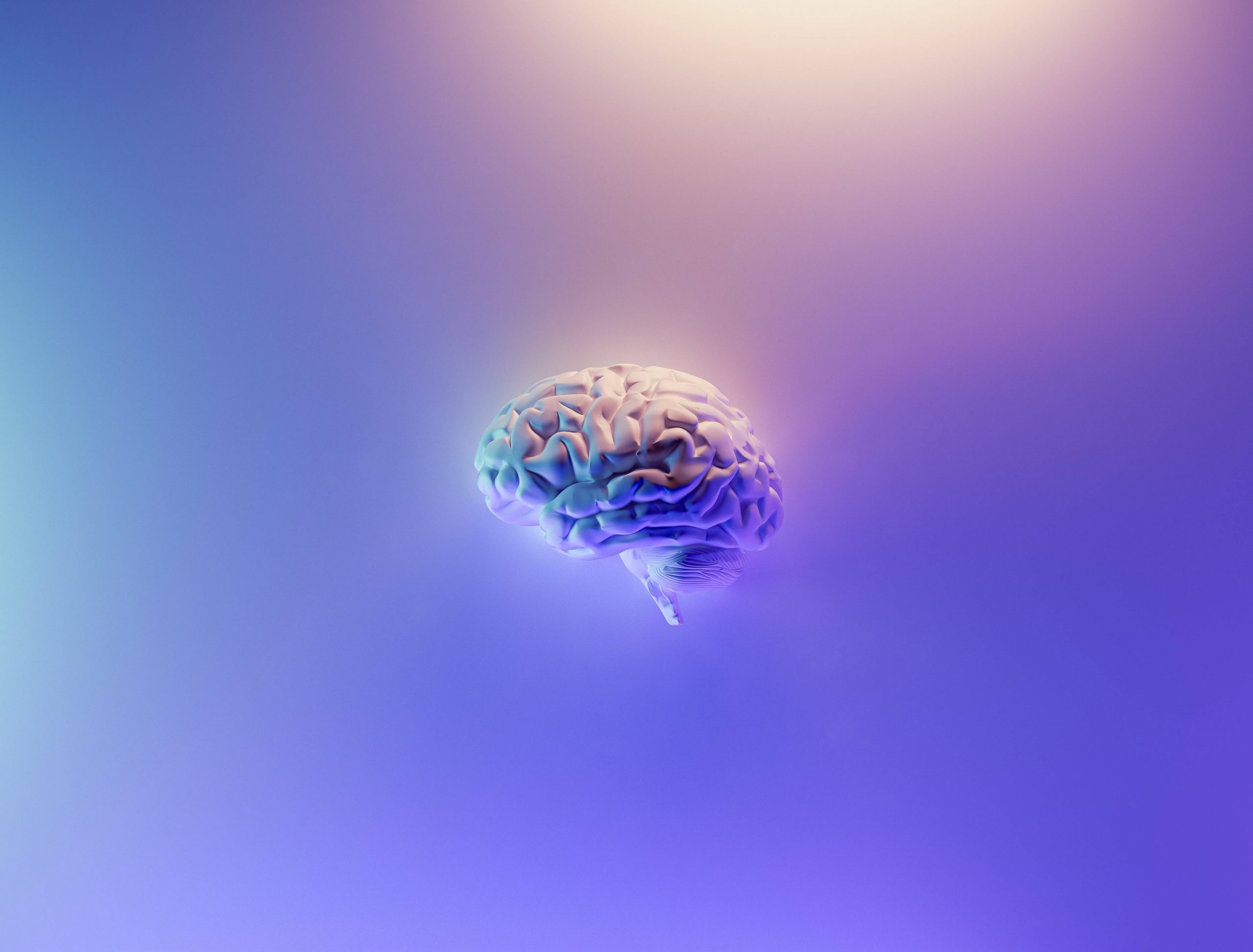AquasparkTM is one of the formulas we use in products like GABAlicious to help improve mental focus, energy levels, and performance.
By layering stimulants with several key “brain ingredients” and central nervous system modulators, we’ve engineered Aquaspark to help you be at your best when it counts. Also, our custom stimulant blends are designed to help you stay at peak performance and alertness all day without the jitters or crashes.

Why Is Stimulant Or Energy-Boosting Activity Important In Nootropics?
Before we dive into the tremendous benefits of Aquaspark, let’s first take a second to review why nootropics can have stimulating activity on the brain, and why stimulants make up a key part of world-class nootropic stacks.
Note: here we’re talking about natural stimulants and brain boosters, not Adderall, Modafinil, or other prescription drugs.
Boosts Overall Neurologic Activity
Stimulants, when used in a safe and sustainable way, can improve overall mood and energy levels. One of the most well-known stimulants is caffeine, guzzled down by the mega-gallon in the form of coffee by people worldwide. Substances like caffeine boost neurological activity by stimulating the central nervous system and influencing other physiological parameters.
Reduces Brain Fog
Some emerging evidence indicates that nootropics may also reduce brain fog and improve cognitive function. In a placebo-controlled trial, 26 healthy adults between the ages of 20-35 were assigned to take 10 g of either a multi-ingredient nootropic or maltodextrin as a placebo. This nootropic blend, known as EvoGamers, was designed specifically for gamers. The ingredients included:
- Caffeine
- L-tyrosine
- L-theanine
- Acetylcholine precursors, including CDP choline and alpha-GPC
- Acetyl L-carnitine
- Huperzine A
- Vitamins
Researchers then performed a variety of cognitive tests on the participants 30 minutes after they ingested the nootropics or placebo. The participants also had their heart rate and heart rate variability measured. Participants that took a nootropic blend performed better on a range of cognitive tests than the placebo group. Additionally, the group that took the nootropic supplement demonstrated higher levels of creativity and positive emotions.

Boosts Mitochondrial Function And Reduces Oxidative Stress
Stimulants can also enhance mitochondrial function, though the process by which this happens needs further exploration. One theory of how stimulants like caffeine can boost mitochondria is by promoting mitochondrial energy production. Other mechanisms include the reduction of oxidative stress, which left unchecked can damage mitochondria and other parts of the cell.
Stimulates Orexins
Orexins are neurotransmitters that promote wakefulness. Stimulants promote their transport to binding sites in the brain or upregulate their functions in other ways. Once bound in place, these orexins keep you awake, whereas blocking the receptors for orexin initiates biochemical processes necessary for sleep. Stimulants like caffeine may play a role in helping orexins perform their jobs better.
What’s The Problem With Caffeine?
Caffeine has several health benefits, but it also has its fair share of drawbacks. While caffeine is a very efficient neural activity stimulant, its effect does not always have the desired duration. Moreover, caffeine’s aggressive stimulant activity can actually stress the body and interfere with sleep.
Short Or Problematic Pharmacokinetics
One of the primary disadvantages of caffeine is its short pharmacokinetic action within the body. Caffeine absorbs into the body very quickly, with 99% of caffeine completely absorbed by the body within 45 minutes of ingestion.
After absorption, caffeine has a 2.5-4.5 hour half-life depending on the individual, meaning it’s only keeping you energized for a few hours max. However, the residual amounts of caffeine in your system can still keep you from falling asleep 9 – 12 hours after you drink your last cup. Even if you do fall asleep, it could interfere with your sleep quality.
Tolerance And More Fatigue From Adenosine Receptor Upregulation
Moreover, coffee lovers and people who frequently consume caffeine can build a tolerance to it, to where it no longer has the same stimulating effects. Part of this happens due to the upregulation of adenosine receptors.
Adenosine receptors help modulate various neurological and immunological functions within your body. Your brain’s endogenous adenosine causes feelings of drowsiness when bound to these receptors. Caffeine weakly blocks adenosine receptors, causing the sensation of enhanced energy and cognitive focus. Subsequently, continued exposure to caffeine will signal the cells to increase adenosine receptors, making you more tired in the long run.
Over time, drinking a single cup of coffee or energy drink cannot cover as many adenosine receptors as are available. Because of this, prolific caffeine users will often find they have to increase their caffeine intake over time or they feel fatigued. But on the flip side, prolonged exposure to high doses of caffeine leads to other side effects.
In other words, relying on caffeine to stay awake and functional is like taking a payday loan on your body. It temporarily blocks your ability to feel fatigue without addressing the root cause of the fatigue. This and increased adenosine receptors make you more tired in the long run. You’ll also need more caffeine to feel the same energy level. Most importantly, it keeps you from getting the most restful sleep you need to feel energized.

Stresses The Body By Taxing The HPA Axis
One of these side effects is the stress that caffeine causes on the hypothalamic pituitary adrenal (HPA) axis. The HPA axis controls the stress response of the body.
When caffeine enters the body, it galvanizes the different organ systems into action, including the HPA axis and therefore the stress response. Consistently elevated or even moderate doses of caffeine continually stimulate the HPA axis to produce stress hormones like ACTH and cortisol. This can be beneficial because stimulating the HPA axis can help with stress modulation.
Nevertheless, overstimulation of the HPA axis can lead to chronic stress, feelings of anxiety, difficulty sleeping, and a host of other symptoms. Resultantly, taking only caffeine to get through the day can cause long-term issues and ultimately more fatigue.
Interfere With Sleep, Especially With People With Weak CYP1A2
The stimulant activity of caffeine can severely affect sleep if taken too close to bedtime, and some people experience this effect much more intensely. The gene primarily responsible for metabolizing caffeine is called CYP1A2. People who have weaker CYP1A2 activity cannot metabolize caffeine that well, resulting in them experiencing insomnia and other symptoms.
Slow vs. Fast Caffeine Metabolizers
As already shown, caffeine tends to metabolize very quickly, and some people metabolize caffeine faster than others. This metabolism variability has a lot to do with the CYP1A2 gene.
People with strong CYP1A2 expression, and mutations that enhance that expression, tend to get more benefits from consuming coffee. These may include cognitive enhancement without the jitters and the antioxidant benefits from coffee. On the other hand, “slow” caffeine metabolizers tend to have slow caffeine breakdown catalyzed by CYP1A2.
One clinical study tested the rate of caffeine metabolism in different people with varying CYP1A2 levels of expression. Researchers found that caffeine enhanced exercise performance in “fast” metabolizers vs. slow metabolizers.
47.5% of the population are considered “fast metabolizers with strong CYP1A2 expression. About 11.5% comprise the “slow metabolizers,” with another 41% falling into the “medium” metabolizers category.
Is Caffeine A Nootropic And What Neurotransmitters Does It Increase?
While caffeine works well as a stimulant, many do not not consider it a true nootropic. This is because caffeine can increase blood pressure. A true nootropic does not affect blood pressure.
Despite its murky status as a nootropic, caffeine’s powerful stimulant activity can allow it to work synergistically with many other nootropics and neurotransmitter building blocks. Caffeine on its own increases catecholamines, acetylcholine, glutamine, and serotonin. It also decreases the availability of GABA and glycine, which are your calming neurotransmitters.

How Nootopia Overcomes The Pitfalls Of Caffeine
Caffeine possesses stimulant effects that can boost exercise performance and cognitive functions. But it also has side effects, such as interfering with sleep and stress response. So, instead of caffeine, we layer different types of stimulants with various pharmacokinetics so you can get steady cognitive and energy boosts without the same side effects.
For example, Aquaspark contains a very small amount of caffeine along with other stimulants with differing pharmacokinetics. We also include other neuromodulating compounds and brain boosters. Let’s take a deep dive into all the key players of Aquaspark:
Acetyl-L-tyrosine
As a key component of the broad spectrum Aquaspark formula, acetyl-L-tyrosine provides one of the essential building blocks for unlocking full brain potential. The production of energizing neurotransmitters such as dopamine and norepinephrine requires the amino acid tyrosine. Acetyl-L-tyrosine is a more bioavailable form of tyrosine that can easily cross the blood-brain barrier to provide a backbone for your energizing neurotransmitters.
Theanine
In any holistic stimulant formula such as Aquaspark, modulating and calming compounds can play a key role in ensuring a sustained response to stimulants. This prevents spikes and drops in attention and performance. L-theanine, a substance found in green tea, exists as one such modulator.
Theanine modulates stress and promotes calmness by increasing alpha wave production. Alpha waves are present during the resting yet awake state of the brain, and they play an important role in day-to-day brain activity. L-theanine also improves concentration by enhancing the alpha-attention effect, where elevated alpha wave activity boosts concentration.
One clinical study with 16 experimental and 19 control participants measured EEG activity after the experimental participants consumed a tea-like solution high in L-theanine. Participants who took the L-theanine had much greater alpha wave activity than the control group. Conclusively, the participants who took L-theanine found it easier to enter a resting state.
Many nootropic users have found great benefits for combining theanine with caffeine, as Mother Nature puts them together in green tea. Theanine buffers the jitters from caffeine and improves caffeine clearance, while simultaneously producing some synergistic cognitive benefits. Theanine also counteracts the brain blood flow restriction by caffeine.
Guarana
Guarana is another effective stimulant that works synergistically with caffeine. Energy drink manufacturers often combine caffeine with guarana for better stimulant activity.
Aside from caffeine, guarana also contains theobromine and theophylline, which have different half lives than caffeine [R30]. Theobromine has a 2-3 hour half life, whereas theophylline has up to an 8-hour half life. Therefore, guarana and caffeine together work synergistically for longer than caffeine alone.
Along with its stimulant properties, guarana possesses many other health benefits. In South America where it originates, locals often use it as a medicinal plant. Furthermore, researchers have found guarana to have significant antioxidant and antimicrobial properties.
Schizandrol-A
Isolated from the plant Schisandra, schizandrol-A functions as a central nervous system inhibitor, specifically by inhibiting monoamine oxidases (MAOs). MAOs are enzymes that break down neurotransmitters like dopamine and serotonin, and inhibiting them leads to higher levels of dopamine and serotonin in the brain. These neurotransmitters are known as some of the brain’s “happy chemicals,” and can improve mood and cognitive function.

Capsaicin
While not in Aquaspark specifically, capsaicin is another powerful stimulant found in our other Nootopia formulas like Noospark, often used in combination with Aquaspark. Capsaicin has selective stimulant activity upon afferent neurons is believed to enhance energy balance. It also has cardioprotective, anti-inflammatory, and digestive benefiting properties.
Bringing It All Together: Layering Caffeine With Brain-Supporting Compounds
The Aquaspark formula contains two kinds of high-quality caffeine, including coffee bean caffeine which contains high levels of antioxidants. The second source of caffeine in Aquaspark, caffeine anhydrous, provides a rapidly absorbable source of caffeine for an instant energy boost.
But taking only these sources of caffeine does not deliver the long term energy boost your body needs to get you to the next level. That’s why we’ve layered these powerful stimulants with all the ingredients mentioned above to create a sustainable source of cellular energy that will enhance your performance and health.
How It All Comes Together In Aquaspark: Best Stimulants For Sustained Energy And Brain Function
We engineered Aquaspark so that different components work synergistically together and counteract potential side effects. We also took into account the fact that the brain in high gear burns through neurotransmitters faster and generates more oxidative stress. So, here’s how everything comes together.
- Guarana contains some caffeine, along with theobromine and theophylline, which have different half lives than caffeine. This allows aquaspark to improve wakefulness for longer than caffeine alone.
- At the same time, theanine buffers the jitters from caffeine and improves caffeine clearance, while producing some synergistic cognitive benefits. Theanine also counteracts the brain blood flow restriction by caffeine.
- Neurotransmitter support: Acetyl-L-tyrosine provides building blocks for dopamine and other catecholamines necessary for energy, while schizandrol boosts dopamine and huperzine-A boosts acetylcholine by moderating the acetylcholinesterase enzyme.
- Plant antioxidants from guarana and coffee bean extract help counteract oxidative stress that may occur as you put your brain on high gear. They also protect the mitochondria, the cell’s energy source, which are critical for your brain to work clearly and improve connectivity between all areas of brain function.
Other Steps Nootopia Takes To Provide The Best Stimulants
We want Nootopians to get the best possible results out of their products. That’s why we go the extra mile to ensure that the stimulants you are getting are truly effective. Some of the ways we have optimized Aquaspark include:
Educating Users
To help Nootopians learn the absolute best routines for taking any products containing Aquaspark or other stimulants, we inform our users about caffeine tolerance. To circumvent caffeine tolerance, we recommend weekly cycling off of stimulants, so that you can let your receptors rest and avoid caffeine withdrawal.
As world-class formulators and top performers, we know that no nootropics can truly overcome sleep deprivation and unhealthy lifestyles. Therefore, we also advocate for getting the best sleep you can get to maximize the benefits you get from nootropics.

Innovative Delivery Methods
We package our high-quality stimulants in the most absorbable delivery methods. These include stimulants in forms like sippable liquid, double-layered capsules, and micronized deliveries. We want to make sure that your body absorbs the highest amount of stimulants and other essential active ingredients as possible.
Providing Building Blocks/Raw Materials For The Brain To Be Awake
When your brain is in the highest gear, it needs more building blocks. So, we include components like B vitamins and amino acids such as Acetyl-L-tyrosine in the stack along with the stimulants. This creates a formula that doesn’t just stimulate the brain, but also nourishes it to function at its best without the subsequent crash.
Formulas like Aquaspark literally provide the essential building blocks the brain needs to create neurotransmitters and other compounds in order to support wakefulness and attention.
Personalization
Finally, as with all our formulas, the ultimate goal is to help you achieve your personal God mode. We use a detailed questionnaire to get to know you and your brain before formulating your first stack. Then, each month, we take into account your feedback and hone your personal subscription box until we have a truly excellent formula you need for whatever life throws at you.
Become a Nootopian today and add GABAlicious to your monthly order. If it doesn’t work for you, we have a 365-day money-back guarantee.
References:
- Medrano M, Molina-Hidalgo C, Alcantara JMA, Ruiz JR, Jurado-Fasoli L. Acute effect of a dietary multi-ingredient nootropic as a cognitive enhancer in young healthy adults: A randomized, triple-blinded, placebo-controlled, crossover trial. Front Nutr. 2022;9:858910. doi:10.3389/fnut.2022.858910
- Barcelos RP, Lima FD, Carvalho NR, Bresciani G, Royes LF. Caffeine effects on systemic metabolism, oxidative-inflammatory pathways, and exercise performance. Nutr Res. 2020;80:1-17. doi:10.1016/j.nutres.2020.05.005
- Gonçalves DF, Tassi CC, Amaral GP, et al. Effects of caffeine on brain antioxidant status and mitochondrial respiration in acetaminophen-intoxicated mice. Toxicol Res (Camb). 2020;9(5):726-734. doi:10.1093/toxres/tfaa075
- Kaczmarczyk-Sedlak I, Folwarczna J, Sedlak L, et al. Effect of caffeine on biomarkers of oxidative stress in lenses of rats with streptozotocin-induced diabetes. Arch Med Sci. 2019;15(4):1073-1080. doi:10.5114/aoms.2019.85461
- Wang C, Wang Q, Ji B, et al. The orexin/receptor system: Molecular mechanism and therapeutic potential for neurological diseases. Front Mol Neurosci. 2018;11:220. doi:10.3389/fnmol.2018.00220
- Murphy JA, Deurveilher S, Semba K. Stimulant doses of caffeine induce c-FOS activation in orexin/hypocretin-containing neurons in rat. Neuroscience. 2003;121(2):269-275. doi:10.1016/s0306-4522(03)00461-5
- Min H, Youn E, Shim YH. Long-term caffeine intake exerts protective effects on intestinal aging by regulating vitellogenesis and mitochondrial function in an aged Caenorhabditis elegans model. Nutrients. 2021;13(8):2517. doi:10.3390/nu13082517
- Donovan JL, DeVane CL. A primer on caffeine pharmacology and its drug interactions in clinical psychopharmacology. Psychopharmacol Bull. 2001;35(3):30-48.
- Sajadi-Ernazarova KR, Anderson J, Dhakal A, Hamilton RJ. Caffeine Withdrawal. In: StatPearls [Internet]. StatPearls Publishing; 2022.
- Ballesteros-Yáñez I, Castillo CA, Merighi S, Gessi S. The role of adenosine receptors in psychostimulant addiction. Front Pharmacol. 2017;8:985. doi:10.3389/fphar.2017.00985
- Lara B, Ruiz-Moreno C, Salinero JJ, Del Coso J. Time course of tolerance to the performance benefits of caffeine. PLoS One. 2019;14(1):e0210275. doi:10.1371/journal.pone.0210275
- Wikoff D, Welsh BT, Henderson R, et al. Systematic review of the potential adverse effects of caffeine consumption in healthy adults, pregnant women, adolescents, and children. Food Chem Toxicol. 2017;109(Pt 1):585-648. doi:10.1016/j.fct.2017.04.002
- Patz MD, Day HEW, Burow A, Campeau S. Modulation of the hypothalamo-pituitary-adrenocortical axis by caffeine. Psychoneuroendocrinology. 2006;31(4):493-500. doi:10.1016/j.psyneuen.2005.11.008
- Prajapati SK, Dangi DS, Krishnamurthy S. Repeated caffeine administration aggravates post-traumatic stress disorder-like symptoms in rats. Physiol Behav. 2019;211(112666):112666. doi:10.1016/j.physbeh.2019.112666
- O’Callaghan F, Muurlink O, Reid N. Effects of caffeine on sleep quality and daytime functioning. Risk Manag Healthc Policy. 2018;11:263-271. doi:10.2147/RMHP.S156404
- Pittsley RA, Kolomyjec SH. Analysis of the CYP1A2 caffeine metabolism gene in the student population at Lake Superior State University. bioRxiv. Published online 2022. doi:10.1101/2022.06.14.496190
- Carswell AT, Howland K, Martinez-Gonzalez B, Baron P, Davison G. The effect of caffeine on cognitive performance is influenced by CYP1A2 but not ADORA2A genotype, yet neither genotype affects exercise performance in healthy adults. Eur J Appl Physiol. 2020;120(7):1495-1508. doi:10.1007/s00421-020-04384-8
- Kujawska A, Kujawski S, Hajec W, et al. Coffee consumption and blood pressure: Results of the second wave of the cognition of older people, education, recreational activities, nutrition, comorbidities, and functional capacity studies (COPERNICUS). Nutrients. 2021;13(10):3372. doi:10.3390/nu13103372
- Nicolaus BJR. Chemistry and pharmacology of nootropics. Drug Dev Res. 1982;2(5):463-474. doi:10.1002/ddr.430020507
- Nehlig A, Daval JL, Debry G. Caffeine and the central nervous system: mechanisms of action, biochemical, metabolic and psychostimulant effects. Brain Res Brain Res Rev. 1992;17(2):139-170. doi:10.1016/0165-0173(92)90012-b
- Chaturvedi S, Ganeshpurkar A, Shrivastava A, Dubey N. Protective effect of co-administration of caffeine and piracetam on scopolamine-induced amnesia in Wistar rats. Curr Res Pharmacol Drug Discov. 2021;2(100052):100052. doi:10.1016/j.crphar.2021.100052
- Young SN. L-tyrosine to alleviate the effects of stress? J Psychiatry Neurosci. 2007;32(3):224.
- PubChem. N-Acetyl-L-tyrosine. Nih.gov. Accessed August 26, 2022. https://pubchem.ncbi.nlm.nih.gov/compound/N-Acetyl-L-tyrosine
- Kimura K, Ozeki M, Juneja LR, Ohira H. L-Theanine reduces psychological and physiological stress responses. Biol Psychol. 2007;74(1):39-45. doi:10.1016/j.biopsycho.2006.06.006
- Nobre AC, Rao A, Owen GN. L-theanine, a natural constituent in tea, and its effect on mental state. Asia Pac J Clin Nutr. 2008;17 Suppl 1:167-168. Accessed August 26, 2022. https://apjcn.nhri.org.tw/server/apjcn/17/s1/167.pdf
- Gomez-Ramirez M, Higgins BA, Rycroft JA, et al. The deployment of intersensory selective attention: a high-density electrical mapping study of the effects of theanine. Clin Neuropharmacol. 2007;30(1):25-38. doi:10.1097/01.WNF.0000240940.13876.17
- Owen GN, Parnell H, De Bruin EA, Rycroft JA. The combined effects of L-theanine and caffeine on cognitive performance and mood. Nutr Neurosci. 2008;11(4):193-198. doi:10.1179/147683008X301513
- Dodd FL, Kennedy DO, Riby LM, Haskell-Ramsay CF. A double-blind, placebo-controlled study evaluating the effects of caffeine and L-theanine both alone and in combination on cerebral blood flow, cognition and mood. Psychopharmacology (Berl). 2015;232(14):2563-2576. doi:10.1007/s00213-015-3895-0
- Moustakas D, Mezzio M, Rodriguez BR, Constable MA, Mulligan ME, Voura EB. Guarana provides additional stimulation over caffeine alone in the planarian model. PLoS One. 2015;10(4):e0123310. doi:10.1371/journal.pone.0123310
- Hasegawa T, Takahashi K, Saijo M, Ishii T, Nagata T. Rapid determination of theophylline, theobromine and caffeine in dietary supplements containing guarana by ultra-performance liquid chromatography. Shokuhin Eiseigaku Zasshi. 2009;50(6):304-310. doi:10.3358/shokueishi.50.304
- Patrick M, Kim HA, Oketch-Rabah H, Marles RJ, Roe AL, Calderón AI. Safety of guarana seed as a dietary ingredient: A review. J Agric Food Chem. 2019;67(41):11281-11287. doi:10.1021/acs.jafc.9b03781
- Majhenič L, Škerget M, Knez Ž. Antioxidant and antimicrobial activity of guarana seed extracts. Food Chem. 2007;104(3):1258-1268. doi:10.1016/j.foodchem.2007.01.074
- Zhang L, Niu X. Effects of schizandrol A on monoamine neurotransmitters in the central nervous system. Zhongguo Yi Xue Ke Xue Yuan Xue Bao. 1991;13(1):13-16.
- Yeung AWK, Georgieva MG, Atanasov AG, Tzvetkov NT. Monoamine oxidases (MAOs) as privileged molecular targets in neuroscience: Research literature analysis. Front Mol Neurosci. 2019;12:143. doi:10.3389/fnmol.2019.00143
- Ludy MJ, Moore GE, Mattes RD. The effects of capsaicin and capsiate on energy balance: critical review and meta-analyses of studies in humans. Chem Senses. 2012;37(2):103-121. doi:10.1093/chemse/bjr100
- Holzer P. Peppers, capsaicin, and the gastric mucosa. JAMA. 1989;261(22):3244-3245. doi:10.1001/jama.1989.03420220058020
- Srinivasan K. Biological activities of red pepper (Capsicum annuum) and its pungent principle capsaicin: A review. Crit Rev Food Sci Nutr. 2016;56(9):1488-1500. doi:10.1080/10408398.2013.772090
- Trexler ET, Smith-Ryan AE, Roelofs EJ, Hirsch KR, Mock MG. Effects of coffee and caffeine anhydrous on strength and sprint performance. EJSS (Champaign). 2016;16(6):702-710. doi:10.1080/17461391.2015.1085097
- Masek A, Latos-Brozio M, Kałużna-Czaplińska J, Rosiak A, Chrzescijanska E. Antioxidant properties of green coffee extract. Forests. 2020;11(5):557. doi:10.3390/f11050557
- Seliem EM, Azab ME, Ismail RS, Nafeaa AA, Alotaibi BS, Negm WA. Green coffee bean extract normalize obesity-induced alterations of metabolic parameters in rats by upregulating adiponectin and GLUT4 levels and reducing RBP-4 and HOMA-IR. Life (Basel). 2022;12(5):693. doi:10.3390/life12050693
- Fernstrom JD, Fernstrom MH. Tyrosine, phenylalanine, and catecholamine synthesis and function in the brain. J Nutr. 2007;137(6):1539S-1547S. doi:10.1093/jn/137.6.1539s
